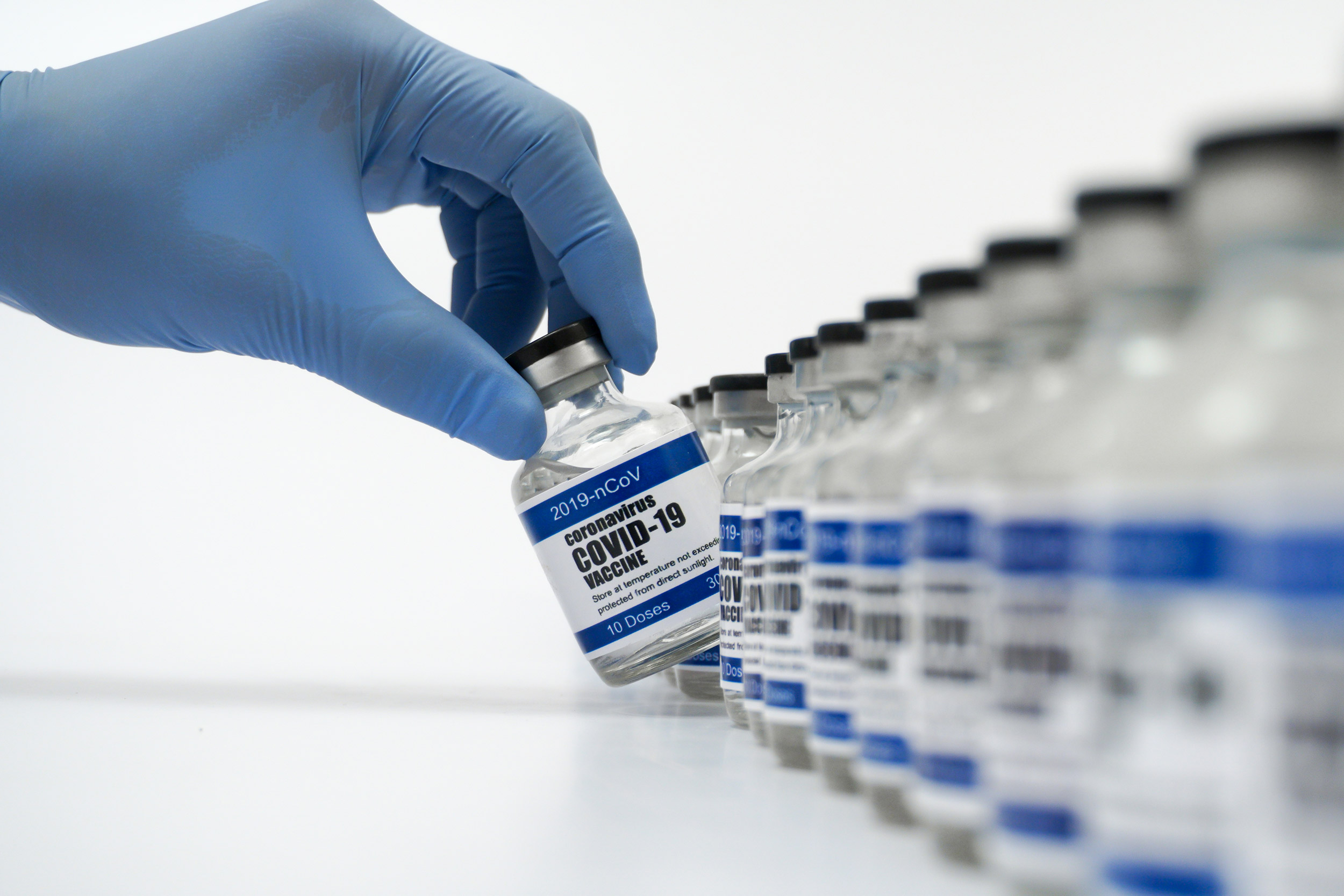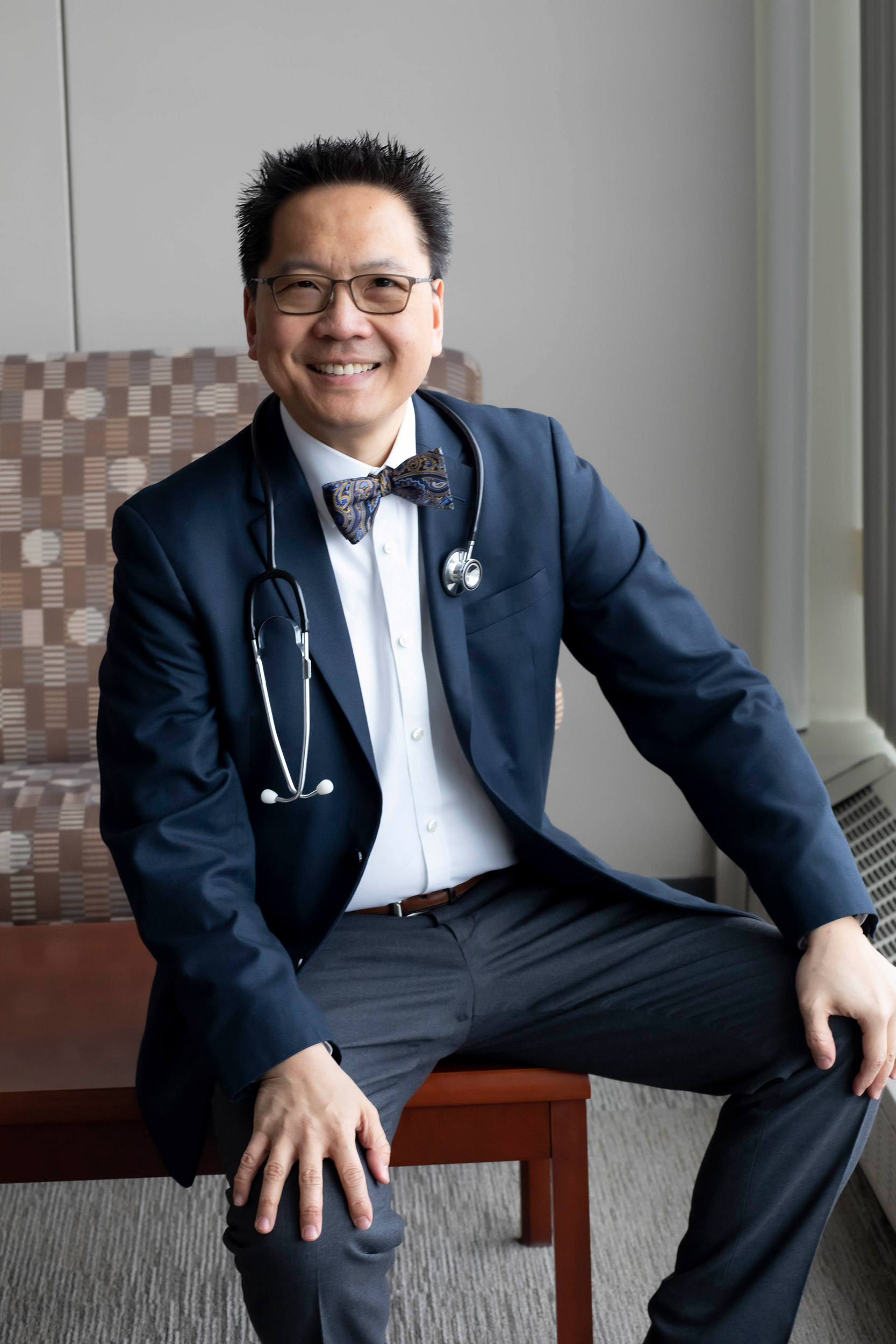
Kunal Mahto/iStock
How Harvard is handling COVID vaccinations
University Health Services chief details process and planning
The Food and Drug Administration (FDA) authorized the first COVID-19 vaccines for use in the United States in mid-December, and institutions across the country, including Harvard, began the process of vaccinating health care workers, first responders, and those individuals most at risk for serious complications from the virus shortly after. Harvard administered its early, limited allotment to health workers on campus involved in direct and COVID-facing care in accordance with the commonwealth of Massachusetts’ distribution plan. The Gazette spoke with Giang Nguyen, executive director of Harvard University Health Services (HUHS), about how the University prepared for the arrival of vaccine, where we are now in the process of vaccinating the Harvard community, and why it’s so important for everyone who is eligible to get vaccinated against COVID-19.
Q&A
Giang Nguyen
GAZETTE: How did Harvard prepare for the possibility that the University would have COVID-19 vaccines to distribute, as we were learning more about their clinical efficacy?
NGUYEN: Throughout the fall, HUHS closely monitored the status of COVID-19 vaccines in development, including their safety, effectiveness, and availability. We also met frequently with members of Harvard’s medical expert advisory group to best prepare for the imminent arrival of these vaccines. In November, before any COVID-19 vaccines were authorized for use in the United States, we began preparing for the likelihood that we would be administering the vaccine to our community. At this time, we made arrangements for storing the vaccines, both in standard freezers, which can house the Moderna vaccine, and ultra-cold freezers, which are necessary for the Pfizer vaccine; we evaluated additional staffing needs; and we started to plan logistics for the distribution of the vaccines on campus.
At the beginning of December, we submitted an application requesting to be a provider for the Massachusetts COVID-19 Vaccine Program (MCVP). We were fortunate to be accepted into that program, and soon after, the FDA authorized the use of the Pfizer and Moderna vaccines. The first shipment of Moderna vaccine arrived here on campus on Dec. 23. It was a fairly small shipment of 200 doses, but we were able to begin making use of it with the first phase of vaccine distribution, and we recently received another 300 doses. Note that it’s not up to us as to which vaccine brand we receive; allotments come from the commonwealth, but as previously mentioned, we have the capability to store and administer both.
In addition, the order of vaccine distribution is dictated by the Massachusetts Department of Public Health. According to their guidance, the first people to receive the vaccine were health care personnel, particularly those working directly with COVID-19-positive individuals. So, these were the initial community members that we targeted for vaccination.
At Harvard, those people who are most likely to come in contact with people infected with COVID-19 include the physicians, nurses, support staff, and housekeeping staff at HUHS Urgent Care. In this initial round of vaccinations, we also included members of the Harvard School of Dental Medicine who provide emergency dental services and medical students working directly with patients who did not receive vaccine through one of the affiliate hospitals, as they also might be exposed to COVID-19 in their work.

GAZETTE: Is Harvard moving forward with the next phase of vaccinations?
NGUYEN: We are still in Phase 1 of the commonwealth’s distribution plan, and we have now moved to vaccinating non-COVID-facing health care staff. First responders are also included in Phase 1, and to this end, the Massachusetts Department of Public Health has set up statewide programs for first responders to receive vaccine. In fact, the commonwealth is leveraging a broad network of government agencies, institutions like Harvard, and other organizations for vaccine distribution. As a result, some in our community may receive their vaccine through an organization other than HUHS. Harvard University Police Department (HUPD) personnel, for example, are receiving their vaccines from the City of Cambridge. HUHS is in close contact with the HUPD to ensure that members of their staff are able to access available vaccines.
Phase 2 will include individuals who are considered to be at some level of increased risk. Within each phase, state guidance has outlined an order of priority and some subsets of the population will receive the vaccine before others. The order and timing of vaccination, particularly within phases, could potentially continue to evolve, so the best way to stay up-to-date on the commonwealth’s guidance is to visit their webpage called “When Can I Get the COVID-19 Vaccine?”
As it stands as of today, the first subset of Phase 2 includes people who are aged 75 and older, people with two or more CDC-designated high-risk conditions, and people living or working in low-income and affordable senior housing. Once those individuals are vaccinated, then we will move on to other risk categories, such as those who work in food services, sanitation, and public health, individuals aged 65 and older, and persons with one high-risk condition.
Right now, the commonwealth is estimating that Phase 2 will take place February through April. We don’t know if it will start at the beginning of February or at the end of February, or even later. The rollout of vaccine distribution thus far has been slower than originally anticipated. In the coming weeks we will see how the timing evolves.
GAZETTE: How do Harvard community members know when a vaccine has become available to them?
NGUYEN: We are communicating directly with individuals. The mode of communication will depend on the population. For example, persons who are being vaccinated based upon their employment role or academic program will be notified through their School or unit. When we begin to vaccinate patients with high-risk conditions, HUHS will reach out directly through the patient portal and by phone.
One note: While we do know the ages of all of our employees, which is important for those who may be older than 65 or 75, we don’t have access to information on high-risk conditions for individuals who receive their care outside of HUHS. Many health systems may have large supplies of vaccine, though, so if community members can access vaccine resources elsewhere first, they should take advantage of it.
GAZETTE: And where are the vaccinations taking place?
More like this
NGUYEN: All vaccinations are currently taking place at HUHS, where we have set up spaces and protocols to keep community members safe. Unlike the flu shot, this vaccine requires clinical observation for at least 15 minutes after the dose has been administered, and we’ve established a process to do this safely in a physically distanced environment. The team at HUHS has worked tirelessly to ensure a smooth vaccine distribution process while still managing viral testing and general clinical care.
GAZETTE: Should all community members get the vaccine, once it becomes available to them?
NGUYEN: I would absolutely encourage everyone who is eligible to be vaccinated to take advantage of that opportunity. This is the first major large-scale approach that is available to us to stem the tide of this pandemic. The success of this approach, however, depends on how many people get vaccinated. The sooner we have enough people vaccinated in our communities, the sooner we can also start to see life return closer to normal.
The vaccine is known to be safe and effective. Extensive protocols were put in place throughout the vaccine development process to ensure its safety, and the CDC and the FDA are continuing to monitor its safety as we move forward.
Individuals can have side effects from the vaccine, but mild to moderate side effects are frequently seen with all vaccines; they simply show that a vaccine is working within the body. Serious, adverse events have been incredibly rare with the COVID-19 vaccines considering the number of people who have already been vaccinated, both in the initial clinical trials, and now in practice.
GAZETTE: Will all Harvard community members be able to be vaccinated on campus?
NGUYEN: Everyone should be keeping close tabs on what vaccines are available in the broader community. We just don’t know when specific subpopulations will be vaccinated, but HUHS intends to make vaccine available to our entire campus community. In the coming weeks and months, with a new administration in the White House, vaccine distribution and availability may change dramatically. There’s a lot more that can happen. As it stands right now, Phase 3 of vaccine distribution includes the general public, which includes healthy younger adults. Massachusetts predicts that Phase 3 will begin sometime between April and June. My hope is that we can get to Phase 3 as early as possible, but we want to make sure that the people who are at greatest risk for complications from COVID-19 are getting our attention first.
GAZETTE: What else should people know about the vaccine itself?
NGUYEN: A single dose is not going to provide immediate, or complete, benefit. Even after completing the full two-dose series, you will not have 100 percent immunity. For this reason, we are still advising at this point that anyone who is vaccinated continue to follow guidelines for mask-wearing, physical distancing, and hygiene, and where applicable, viral testing, as there is still incomplete data on whether the vaccine will prevent individuals from spreading the virus to others, even if it does protect them from getting sick.
As I said before, it’s so important that as many people as possible get vaccinated. The effectiveness for both the Moderna and Pfizer vaccines is reported to be about 95 percent, which is remarkably high, but it means there’s still a 5 percent chance that if you’re exposed to COVID-19, you could get sick from it. Once enough people are vaccinated, community prevalence of the disease should drop to the point that a 5 percent chance doesn’t matter so much. Ultimately, this is the situation we’re hopeful for.







